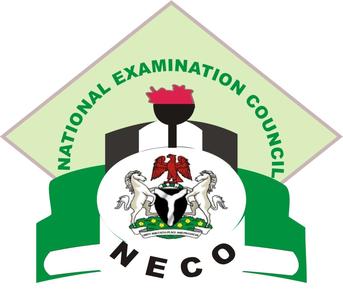
*NECO CIVIC EDUCATION OBJECTIVE AND ESSAY ANSWERS*
*CIVIC OBJECTIVE*
01-10: EACEADDBCC
11-10: DCAABBEDAB
21-30: EECCABDEEC
31-40: AAEBCADACC
41-50: DCADCDEEBE
51-60: CACDDAABBC
===========================================
*SECTION A*
Answer Any 2 Question From This Section..
======================================
(1a)
A Constitution can be defined as a written set of fundamental principles and rules that govern a country or organization. It establishes the framework for the organization’s structure powers and limitations as well as the rights and responsibilities of its citizens or members.
(1b)
(PICK ANY FOUR)
(i) Written Constitution: The 1999 Constitution of Nigeria is a written document that outlines the fundamental principles and rules guiding the governance of Nigeria.
(ii) Federalism: It establishes Nigeria as a federal republic with power shared between the central government and the states. It defines the powers and responsibilities of both levels of government.
(iii) Separation of Powers: The Constitution provides for the separation of powers among the three arms of government: the executive legislative and judicial branches. This ensures a system of checks and balances.
(iv) Fundamental Human Rights: The Constitution enshrines fundamental human rights and freedoms such as the right to life liberty and fair hearing. It sets out the framework for the protection and promotion of these rights.
(v) Citizenship: The Constitution defines who is considered a citizen of Nigeria and outlines their rights privileges and obligations.
(vi) Presidential System: The 1999 Constitution establishes a presidential system of government where the president is the head of state and head of government. It outlines the powers and functions of the president.
(vii) Amendment Process: The Constitution provides for its amendment outlining the procedures to be followed when changes are proposed. It requires a two-thirds majority of the National Assembly and state legislatures for amendments to take effect.
======================================
(2)
(PICK ANY FIVE)
(i) Strong Leadership: A strong and visionary leadership can play a pivotal role in promoting national unity by fostering a sense of identity and purpose among diverse groups of people.
(ii) Inclusive Governance: Ensuring inclusive governance where all ethnic religious and regional groups have a voice in decision-making processes can help bridge divides and promote unity.
(iii) Respect for Diversity: A society that values and respects diversity can foster a climate of acceptance and tolerance. Appreciating different cultures languages and beliefs can contribute to national unity.
(iv) Effective Communication: Open and transparent communication platforms can help promote dialogue and understanding among different groups. It allows for the exchange of ideas and perspectives promoting unity.
(v) Equal Opportunities: Providing equal opportunities in education employment and socioeconomic development can contribute to national unity by reducing social and economic disparities between different groups.
(vi) Shared National Identity: Promoting a shared national identity that transcends ethnic religious and regional differences can help forge a sense of belonging and unity among citizens.
(vii) Peaceful Coexistence: Ensuring peace security and stability within a country promotes national unity. Addressing and resolving conflicts peacefully and fostering a culture of dialogue can contribute to unity.
======================================
(3)
(PICK ANY FIVE)
(i) Economic Development: Youth empowerment skills enable young people to acquire the knowledge and expertise needed to participate in the workforce and contribute to the country’s economic growth.
(ii) Reduced Unemployment: By equipping young people with marketable skills youth empowerment programs can help reduce the unemployment rate providing opportunities for self-employment and job creation.
(iii) Poverty Alleviation: Empowered youth can generate income for themselves and their families leading to poverty reduction and improved living conditions.
(iv) Entrepreneurship Promotion: Youth empowerment skills often include entrepreneurship training encouraging young people to start their own businesses and become self-reliant.
(v) Social Stability: When young people are engaged in meaningful activities and have access to opportunities it can reduce social unrest crime and anti-social behaviors contributing to social stability.
(vi) Skill Development: Empowerment programs focus on building practical skills that are essential for personal and professional growth. These skills can help young people adapt to a rapidly changing job market.
(vii) Civic Engagement and Leadership: Empowered youth are more likely to be actively engaged in their communities taking leadership roles and participating in decision-making processes ultimately contributing to the development of a stronger civil society.
======================================
(4a)
Orderliness can be defined as a state or condition characterized by systematic arrangement and adherence to established rules and regulations. It implies a well-organized and structured environment where people act in a disciplined manner respecting authority and following established procedures.
(4b)
(PICK ANY FOUR)
(i) Traffic Rules: Obeying traffic rules and regulations such as stopping at red lights yielding to pedestrians and following speed limits contributes to orderliness on the roads.
(ii) Public Transportation: Queueing in an orderly manner at bus stops or train stations respecting line spaces and waiting for one’s turn to board public transportation helps maintain order and efficiency.
(iii) Law and Order: Adhering to laws respecting the authority of law enforcement agencies and cooperating with legal procedures contributes to maintaining order and justice within society.
(iv) Organized Events: Events that are well-planned and executed with clear directions designated areas and proper crowd management ensure orderliness and the safety of participants.
(v) Meeting Protocols: Orderliness is essential during meetings or gatherings to ensure effective communication and decision-making. Following meeting protocols such as having an agenda time management and giving each person an opportunity to speak helps maintain order and achieve objectives.
(vi) Law and Social Order: Upholding laws and regulations is vital for maintaining orderliness in society. The legal system ensures that individuals are held accountable for their actions and law enforcement agencies play a crucial role in ensuring social order and public safety.
(vii) Queueing: In various settings such as banks supermarkets or public transport stations orderliness is maintained through queueing systems. People form lines or queues and wait their turn ensuring fairness and efficiency in providing services.
==========================================
*SECTION B*
Answer Any 2 Question From This Section..
*(NUMBER 5)*
(5a)
Civic education is the process of teaching people about their rights and responsibilities as citizens, as well as the knowledge and skills necessary to participate in civic life. It can be formal, such as in schools, or informal, such as through community organizations or the media.
(5b)
(i) Voter Participation: Civic education encourages citizens to exercise their right to vote. Informed voters are more likely to make decisions based on policies and candidates’ qualifications, leading to better representation and governance.
(ii) Community Engagement: Civic education fosters a sense of responsibility towards the community. Informed citizens actively participate in local initiatives, volunteer efforts, and civic organizations, contributing to positive change and social development.
(iii) Critical Media Consumption: Civic education teaches individuals to critically analyze media sources and information. This empowers them to identify and combat misinformation, ensuring a well-informed and discerning society.
(iv) Advocacy for Human Rights: Civic education raises awareness about human rights and social justice issues. Informed citizens are more likely to advocate for the rights of marginalized groups and work towards creating a fair and inclusive society.
:::::::::::::::::::::::::::::::::::::::::::::::::::::::::::
*(NUMBER 7)*
(7a)
Representative democracy is a system of government where citizens elect representatives to make decisions on their behalf. This is different from direct democracy where citizens make decisions themselves. In a representative democracy, citizens vote for representatives who they believe will best represent their interests and make decisions that are in the best interest of the people they represent.
(7b)
(i) Free and fair elections: Elections are held regularly and are free from fraud and coercion.
(ii) Separation of powers: The government is divided into different branches, such as the executive, legislative, and judicial branches, with each having its own powers and responsibilities.
(iii) Protection of individual rights: In a representative democracy, individual rights, such as freedom of speech, religion, and assembly, are protected by law and cannot be violated by the government.
(7c)
(i) In a direct democracy, citizens make decisions themselves, while in an indirect democracy, citizens elect representatives to make decisions on their behalf.
(ii) In a direct democracy, citizens have a more direct role in decision-making, while in an indirect democracy, citizens have a more indirect role in decision-making.
(iii) In a direct democracy, decisions are made through direct voting, while in an indirect democracy, decisions are made through elected representatives.
(iv) In a direct democracy, citizens have more control over the decision-making process, while in an indirect democracy, citizens have less control over the decision-making process.
(v) In a direct democracy, there is less room for corruption and special interests, while in an indirect democracy, there is more room for corruption and special interests to influence decision-making.
::::::::::::::::::::::::::::::::::::::::::::::::::::::::::::
*(NUMBER 8)*
(8a)
Stigmatization is the process of unfairly labeling and stereotyping individuals or groups based on certain characteristics, such as race, gender, sexual orientation, or mental health status. Stigmatization can lead to discrimination, prejudice, and negative attitudes toward the stigmatized group, which can have a harmful impact on their mental, physical, and emotional well-being.
(8b)
(i) Social Stigma: People living with HIV/AIDS are often subjected to social stigma, which can lead to discrimination, harassment, and social exclusion. They may be shunned by friends, family, and community members, and may be denied access to education, employment, and healthcare.
(ii) Self-Stigma: People living with HIV/AIDS may internalize the negative attitudes and beliefs associated with the disease, leading to self-stigma. This can result in feelings of shame, guilt, and low self-esteem, and can prevent individuals from seeking the care and support they need.
(iii) Structural Stigma: Structural stigma refers to the ways in which social institutions, such as healthcare systems, legal systems, and educational systems, perpetuate discrimination and inequality against people living with HIV/AIDS. This can include policies and practices that limit access to healthcare, housing, and employment, as well as laws that criminalize HIV transmission.
(8c)
(i) Education and Awareness: Educating people about HIV/AIDS and how it is transmitted can help reduce stigma and discrimination. This can include public education campaigns, community outreach programs, and training for healthcare providers and other professionals.
(ii) Access to Healthcare: Ensuring that people living with HIV/AIDS have access to quality healthcare can help reduce stigma and discrimination. This can include providing free or low-cost testing, treatment, and counseling services, as well as addressing barriers to care, such as stigma and discrimination within healthcare settings.
(iii) Anti-Discrimination Laws: Enacting and enforcing laws that protect the rights of people living with HIV/AIDS can help reduce stigma and discrimination. This can include laws that prohibit discrimination in employment, housing, and healthcare, as well as laws that criminalize discrimination and hate crimes.
(iv) Community Support: Building strong communities of support for people living with HIV/AIDS can help reduce stigma and discrimination. This can include support groups, peer counseling, and other community-based programs that provide emotional support, education, and advocacy. By providing a safe and supportive environment, people living with HIV/AIDS can feel more empowered to seek the care and support they need.
*_COMPLETED!_*
==============================



nice information. do you have for neco biology tommorow.
Nice information. Can you kindly information for tommorrows biology exam